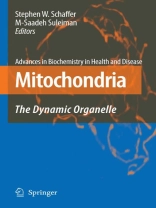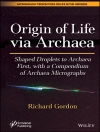The term mitochondrion is derived from Latin, with mitos meaning thread and chondrion meaning granules. Indeed, under the light microscope, mitochondria often appear as rods or granules within the cytoplasm. For decades after initial visualization of mitochondria by light microscopy, mitochondrial function remained clouded. However, with the development of differential centri- gation and electron microscopy, it was discovered that a chief function of the mitochondria was the generation of ATP for the remainder of the cell. For many years, the energy generating function of the mitochondria was considered the primary, if not the sole function of the mitochondria. During that period, inves- gators attempted to obtain information on the mechanism of ATP synthesis and the regulation of electron transport. In the first chapter of the book, Dr. Hassinen summarizes those studies, providing clear pictures on the transformation of reducing equivalents into a proton gradient and the mechanism by which the F F 1 0 ATPase utilizes the proton gradient to generate ATP. He also summarizes the key regulatory steps of the citric acid cycle, which is the major source of reducing equivalents for the electron transport chain. In the heart, most of the carbon that feeds into the citric acid cycle is derived from fatty acid metabolism. Although fatty acid utilization provides most of the ATP for contraction, a proper balance must be maintained between the utilization of fatty acids and that of glucose. In the second chapter, Drs.
Зміст
Mitochondrial Metabolism.- Regulation of Mitochondrial Respiration in Heart Muscle.- Regulation of Fatty Acid Oxidation of the Heart.- Regulation of Mitochondrial Fuel Handling by the Peroxisome Proliferator-Activated Receptors.- Molecular Structure of the Mitochondrial Citrate Transport Protein.- Regulation of Pyruvate and Amino Acid Metabolism.- Amino Acids and the Mitochondria.- The Dynamic Nature of the Mitochondria.- Mechanotransduction of Shear-stress at the Mitochondria.- Mitochondria as Initiators of Cell Signaling.- Formation of Reactive Oxygen Species in Mitochondria.- Mitochondrial Calcium: Role in the Normal and Ischaemic/Reperfused Myocardium.- Mitochondrial Ion Channels.- Mitochondria as Initiators of Cell Death.- The Mitochondrial Permeability Transition Pore – from Molecular Mechanism to Reperfusion Injury and Cardioprotection.- The Apoptotic Mitochondrial Pathway – Modulators, Interventions and Clinical Implications.- The Role of Mitochondria in Necrosis Following Myocardial Ischemia-Reperfusion.- Mitochondria as Modulators of Cell Death.- Mitochondria and Their Role in Ischemia/Reperfusion Injury.- Mitochondrial DNA Damage and Repair.
Про автора
Dr. Stephen W. Schaffer is a professor at the University of South Alabama. He is a member of the editorial board of Molecular and Cellular Biochemistry.
Dr. M.-Saadeh Suleiman is a professor at the University of Bristol, UK. His research includes investigating the role of metabolites and ionic species in myocardial protection, with special emphasis on amino acids, mitochondria, Ca2+ loading and reactive oxygen species.












